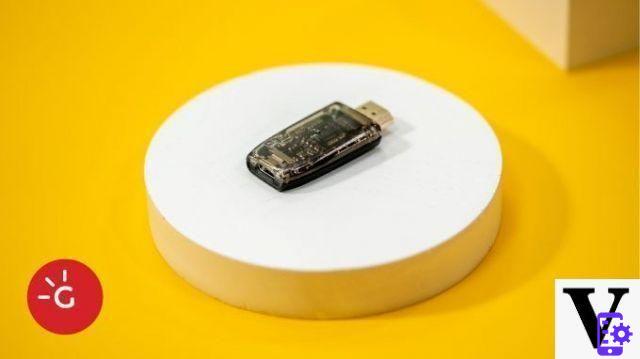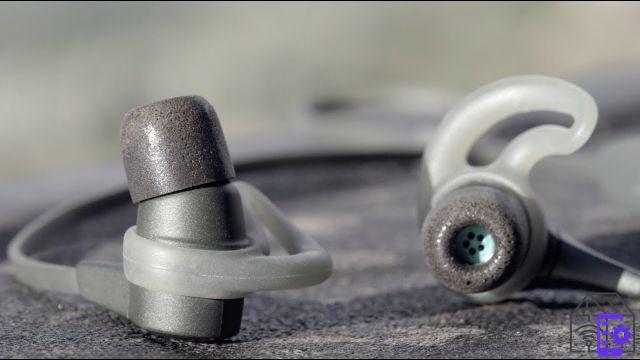
New year, but "old" habits. And so, like every Monday, we return to discover the stories of some of the objects that are part of our daily life. After the brush, the washing machine, the mouse and the sex toys - yes, they are part of our daily life, don't pretend it isn't! -, now it's the turn ofvacuum cleaner. An inevitable household appliance in the homes of Italians, which boasts a rather fascinating and controversial history. Unlike other objects, for example, has a pretty confused paternity, which does not allow us to really distinguish only one inventor of the appliance. But no more chatter. Let's find out the history of the vacuum cleaner.
The vacuum cleaner and the origins of home hygiene
We all know Sunday morning is cleaning day - or something like that - but no one has ever wondered where this habit really comes from. And then we tell you: give it Second Industrial Revolution which, in addition to having brought about incredible changes in the economy, has begun to produce huge amounts of pollution and dirt. Therefore, in a context where infectious diseases were the order of the day cleaning the house it has become a fundamental habit to survive. And it is from here that the history of the vacuum cleaner begins, or almost. For the first few decades, in fact, we can speak only of prototypes and attempts.
In 1860, for example, the American Daniel Hess invented a carpet cleaning machine. In fact, it is a kind of broom equipped with rotating brushes which were able to lift the dust from the texture of the carpets and collect it inside a removable bag. A crude device, which however found the consent of the engineers, who moved to improve the Hess prototype. A few years later - in 1869, to be exact - Ives W. McGaffey patented his "Whirlwind“, A device in wood and canvas that allowed dirt to be sucked from surfaces using a manually operated pump. An interesting idea, no doubt, but one that was not particularly successful.
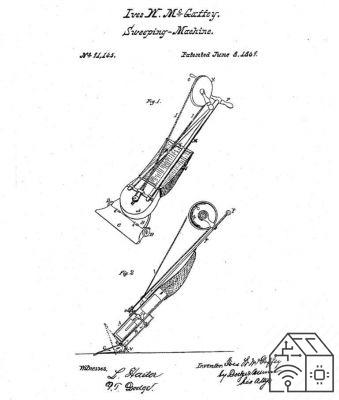
Then it was the turn of Melville Bissell, who invented a wooden box complete with wheels and rotating brushes. And then again that of John S. Thurman, who even designed a petrol powered device, considered to all intents and purposes the first motor vacuum cleaner in history. A rather curious instrument, which blew on the dust to direct it into a tank which would then be emptied. It is also quite heavy, so much so that it seems that the "poor" Thurman had to avail himself of the help of his horses to move him. Not surprisingly, he went down in history with the nickname of "the horse-drawn vacuum cleaner". In short, as anticipated, identifying the real father of the vacuum cleaner is not easy. But the evolution of these prototypes is undoubtedly fascinating.
The true story of the modern vacuum cleaner
The story of Thurman and the horse-drawn vacuum cleaner is funny, yet his intuition served the English engineer Hubert Cecil Booth to develop the first and true prototype of modern vacuum cleaner. We are talking about the "Puffing billy", An aspirator driven by a combustion engine, able to start a pump that allowed to suck the dust through long pipes attached to the body of the machine, and then deposit it on a canvas filter inside a tank of I unload. The mechanism of operation is similar to that of a current vacuum cleaner, but the appearance of the Puffing Billy had nothing to do with it.
We are talking about a huge machine, also carried by horses, and equipped with long rubber tubes that passed through the windows of the buildings to clean carpets and surfaces. It is no coincidence, in fact, that Booth's vacuum cleaner was used in 1902 for the Westminster Abbey cleaning, on the occasion ofcoronation of Edward VII. From what we know, over 20 tons of dirt were collected, and this marked the engineer's incredible success. A few years later, in fact, Booth not only developed a new electric vacuum cleaner, but also founded the goblin, a domestic and non-domestic cleaning company.
But one step is still missing before we get to what the modern, functional but also portable vacuum cleaner really is. And here then comes the solution of James Murray Spangler, an Ohio cleaner who invented a machine that was nothing short of striking in 1907. A broom with a rotating brush and an electrically operated fan, which thus made it possible to collect dust and dirt inside a bag consisting of a pillowcase. Practical, comfortable and functional. But not yet the vacuum cleaner that we know in all respects.
Hoover, the vacuum cleaner revolution
Spangler's intuition was undoubtedly a fundamental moment in the history of the vacuum cleaner. Unfortunately, though, the Ohio cleaner didn't have enough money to produce the device on a large scale. And it is on this occasion that the entrepreneur took over William H. Hoover, who was fascinated by Spangler's idea and decided to invest a lot of money on it. In 1908 he acquired the patent for the machine, and chose to make some notable improvements, such as the use of steel for the construction of the tank. Clearly, Spangler continued to work alongside the entrepreneur, who officially started the Hoover Company in 1922.
In the following years, the company's goal was only one: to improve the device as much as possible. Therefore, they were introduced disposable bags for the collection of dirt, and then it was decided to make the vacuum cleaner in a vertical position, so as to be more practical and manageable. Thus, from this point on, Hoover became almost the only company of choice for the home care sector. But it is clear that it hasn't been forever. Indeed, although the history of the vacuum cleaner is deeply linked to the name of the entrepreneur, we certainly cannot fail to consider the importance that the figure of James dyson. Let's go then to discover the last chapter of this story.
James Dyson's cyclone technology
Let's jump a few decades and arrive in 1983, the year in which the English James Dyson distributes his G-Force, the first vacuum cleaner in history ad use centrifugal force to capture dust and dirt inside the tank. The brilliant designer, in fact, had had the brilliant intuition of cyclonic technology, which he then exploited on two other different models of vacuum cleaners, the DCO1 and the Dyson Dual Cyclone, equipped with two cyclonic chambers. As you can well imagine, such a technology eliminates the need for collection bags, which translates into a (relative) reduction in costs and above all in a lower environmental impact.
Those who know the Dyson vacuum cleaner know that it is equipped with a propeller positioned inside a cyclonic box, capable of creating a vortex that separates the dirt from the air, thus allowing it to be collected inside a special tank. In short, the evolution of the vacuum cleaner is well known, especially thanks to the genius of Mr. Dyson. But without Hess's intuition, or Booth's, we wouldn't be here today talking about it. Yet the history of the vacuum cleaner enjoys an incredible charm, even if it is nothing more than a motorized broom.
Discount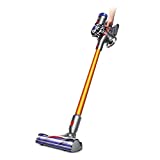 Dyson 227296-01 V8 Absolute Cordless vacuum cleaner
Dyson 227296-01 V8 Absolute Cordless vacuum cleaner
- Dyson V8 Absolute Aspirateur Balai. Electroménager. Marque Dyson. Aspirator puissant sans fil. EAN 5025155031513.
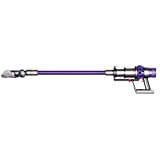 Dyson, Cyclone V10 Animal Cordless Vacuum Cleaner
Dyson, Cyclone V10 Animal Cordless Vacuum Cleaner
- The drive torque of the nozzle removes up to 25% more dust from carpets, compared to the previous model ...
- It transforms into a portable vacuum cleaner. Perfectly balanced for perfect cleaning. It reaches points under the ...
- Filtration system that captures 99,97% of particles up to 0,3 microns in size.






















